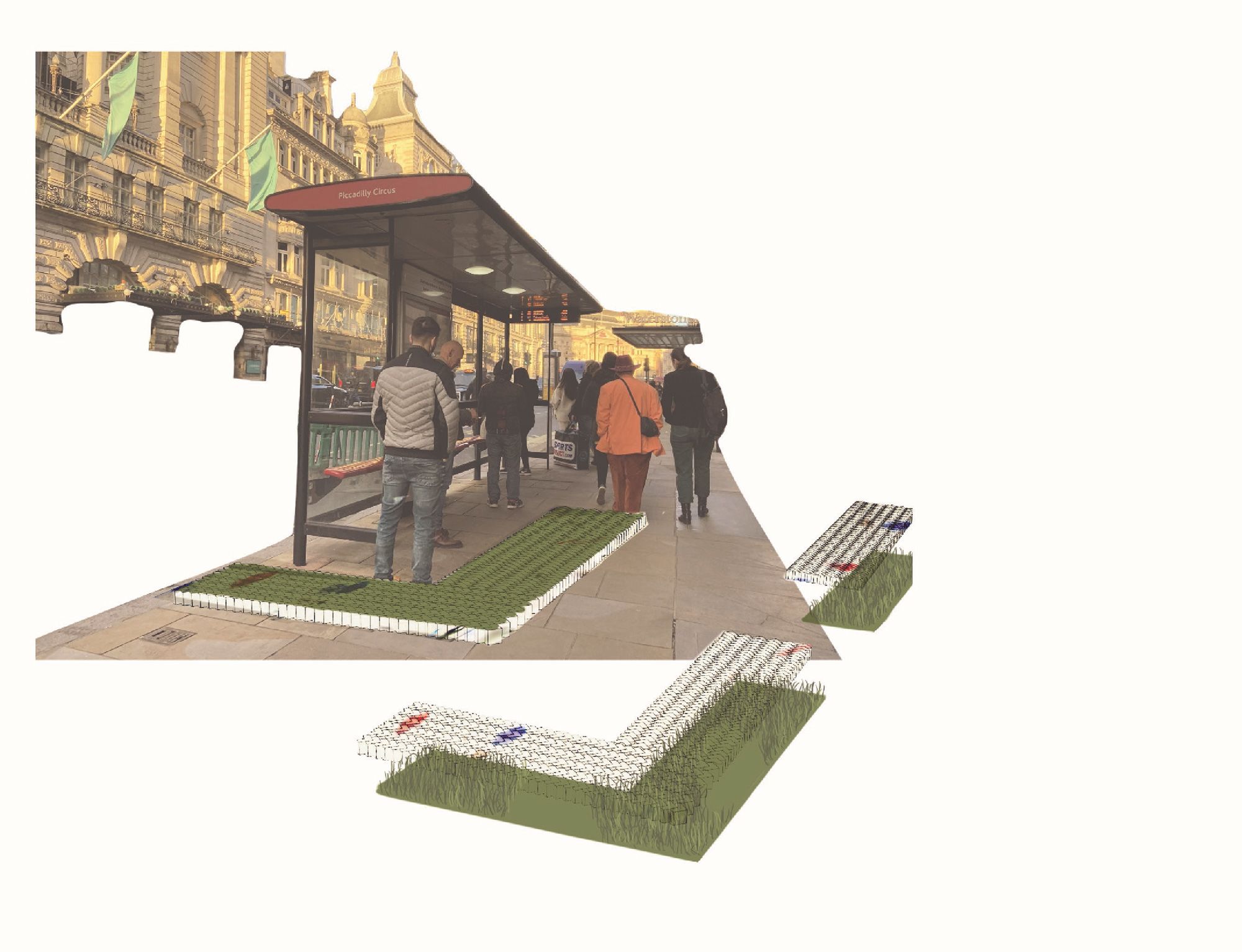
BA (Hons) Interior and Spatial Design, Camberwell College of Arts, UAL | Photograph: Georgina Lombardero


Last year, students on the BA Interior and Spatial Design course at Camberwell College of Arts were faced with the unique challenge of responding to a street design brief while under lockdown.
The project has been in collaboration with Living Streets, a national pedestrian advocacy group whose mission is to achieve a better walking environment and inspire people to walk more.
Senior lecturer Colin Priest says that the project resulted from his own interest and practice in public realm design. He says, “I’ve wanted to work with Living Streets for many years. I think one of the ambitions of this project was that it would enable us to develop conversations we have on the course about empathetic design and inclusivity.”
”Working with Living Streets we came up with a brief that focused on the design of a paving system that works with the existing systems of paving but asks the questions: ‘What is it made of? Who is it for?’ At the same time, the design should understand that the environment is about more than human access but also includes insects, animals, wildlife and weeds: the environment as the client.”

Colin introduced this complex brief to the students with accompanying presentations from John Kilner, Principal Technical Advisor at Living Streets. Alongside this, BA Interior and Spatial Design Senior Lecturer Darren Farrell spoke about his research around synaesthesia. Invited guest lecturers included public realm designer Nick Green, Lavinia Scaletti, a Senior Urban Designer from London Borough of Camden Council and Tom Emerton, Pavement Engineer Manager from Marshall’s, the paving specialists, who was also invited to talk about why the existing systems are the way they are.
As the project was 5 weeks long there needed to be a quick process of observing the site, coming up with prototypes, and making sure students worked robustly within an existing language all while incorporating their own ideas of individual aesthetic and design qualities.
Student Maya Hammoud recalls investigating different types of paving and their usage: “I then began to replicate the quality and textures of certain paving through experimenting with model making material, for example clay and food. I feel that building with your hands offers ideas that you did not initially think of, almost like a ‘happy accident’.”
“I used a combination of both physical and digital brainstorming which I found challenging yet enjoyable throughout my design process. I also greatly appreciated talking to creatives and academics familiar in this field through our live guest lectures, which helped engage us as an audience and form great conversations.”

For her project, Aleksandra Mucha was inspired by some slabs which resembled a cheetah pattern, and decided to use nature as the focal point of her design. Her hexagonal slab features a butterfly wing pattern and comes in three varying heights. The aim of the raised pavement is to encourage the user to walk on an uneven surface, which has been proven to have physical benefits.
Alex also looked Kandinsky's colour research, and how creating energy and movement using colour can produce a more mindful and immersive path. She says, "Focusing on physical and psychological impacts of design was intriguing. I realised that in creating a space, you're also creating an experience, which gives you as the designer a lot of power. This also made me interested in the psychology of design, research which I have focused on ever since.”

Of course, the project also had the added complication of being delivered under lockdown, with students working from their homes all over the world, including in Spain, China and Lebanon. Colin notes that many of the examples that students were referencing from other countries were a lot more aware of inclusive and accessible design than in London.
He continues, “this was part of the potency of the project. They could share experiences of what public realm is like all over the world, and this global sharing was one of the project’s strengths: the pavements in Barcelona are very different to in China, or in the UK.”

Students explored the paving in their local area within their own local lockdown restrictions, with some engaging with their local high streets. They often had to work laterally to find a way to engage with the landscape. Georgina Lombardero was working in Barcelona under strict curfew at the time. She came up with a solution to delivering the project through online reference points, photos on the internet and making a 1:1 example, with a view to doing an installation when she was able to go out.
The outcomes of the project have been shared with Living Streets who were very impressed - and want to work with UAL again.
Colin says, “We’ve engaged with the public realm in many ways on the course before: it’s important because the public realm offers a space of agency and a space of mutual connection which we all share. This is something that I think is critical to the course and its outlook: engaging with real places, real people, real material, real stories.”
Find out more about our BA Interior and Spatial Design course
Telephone
+44 (0)20 7514 6302